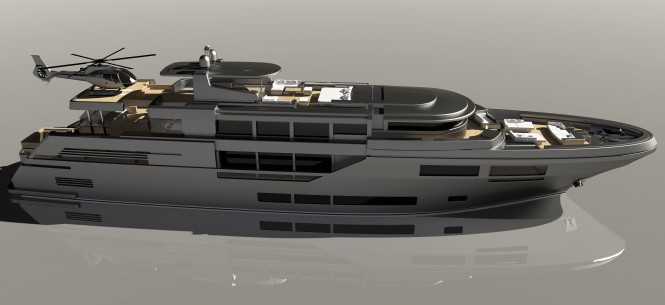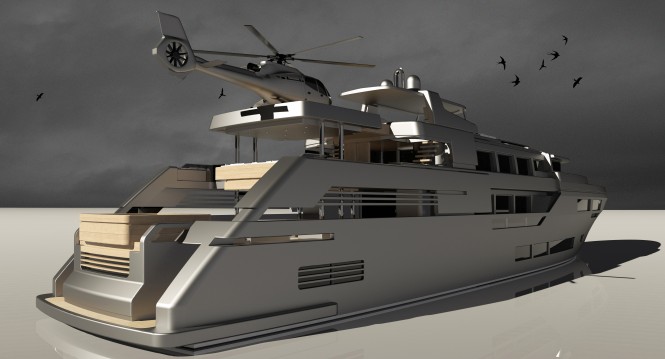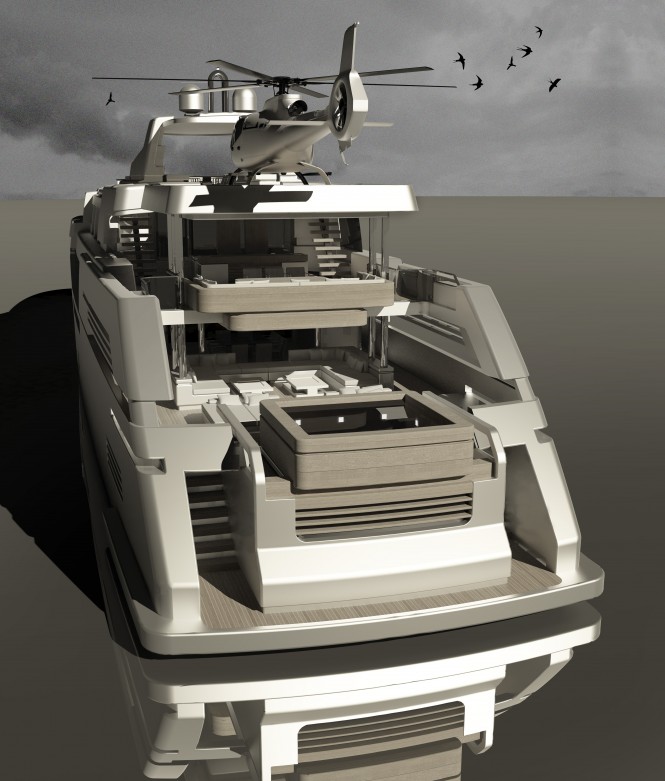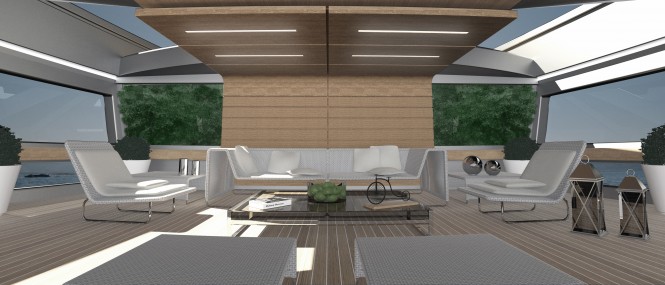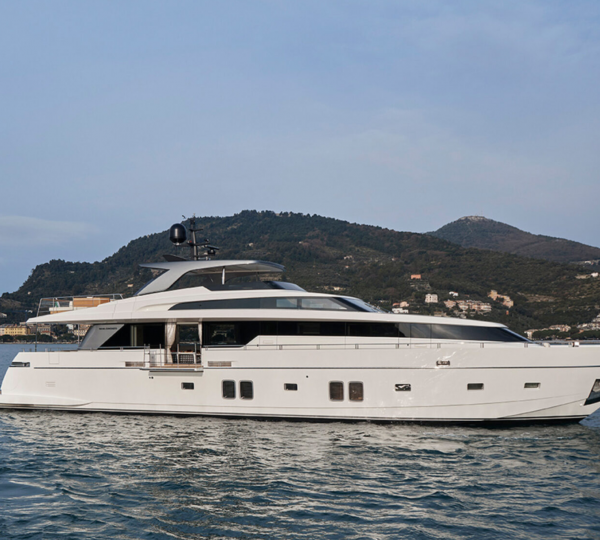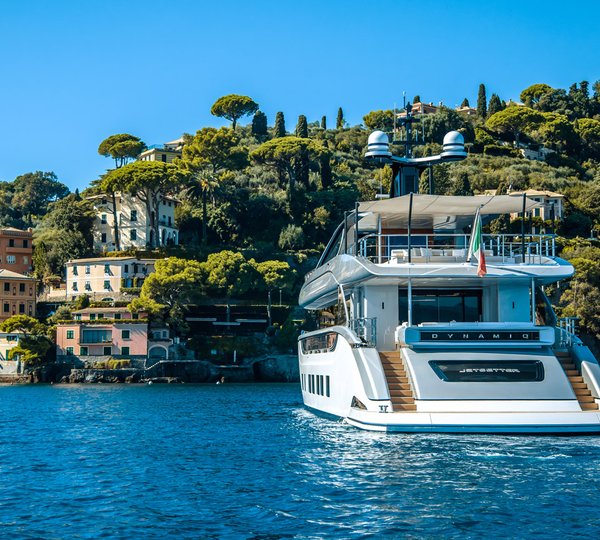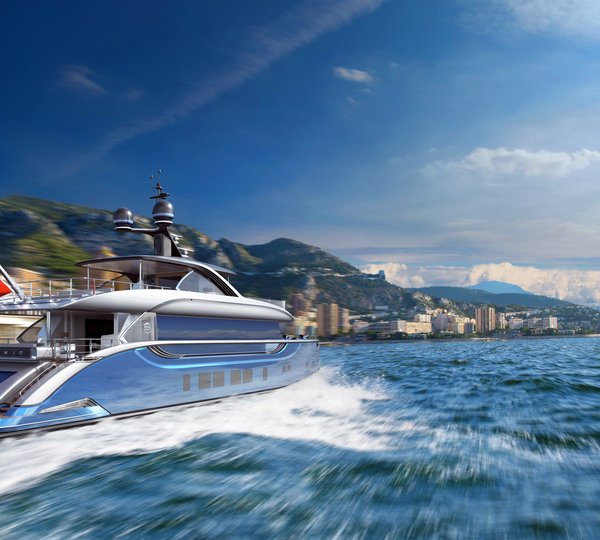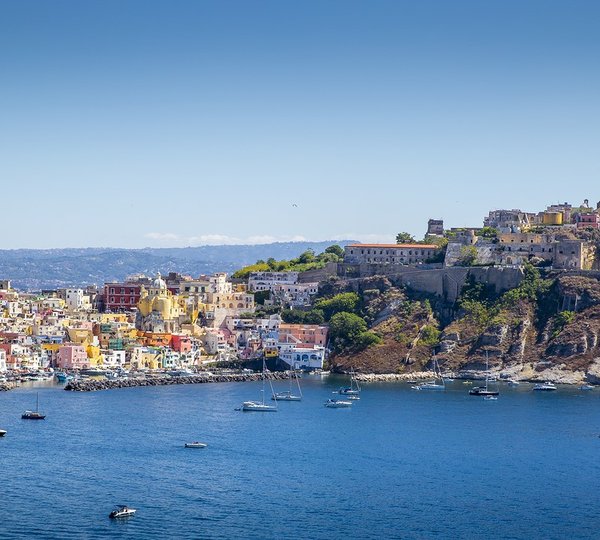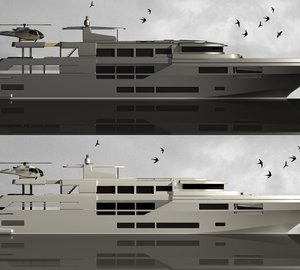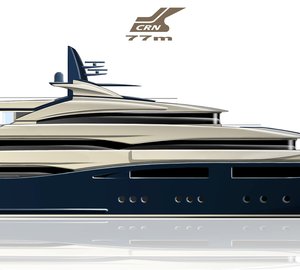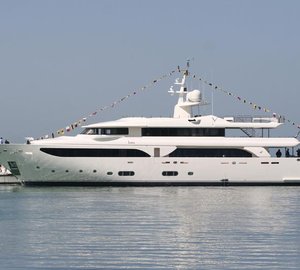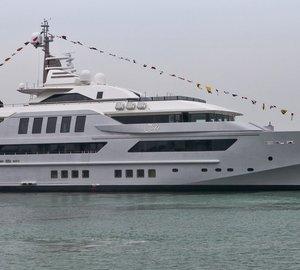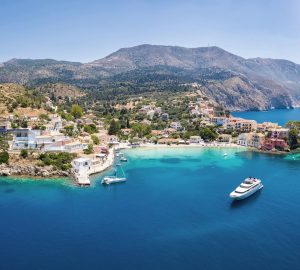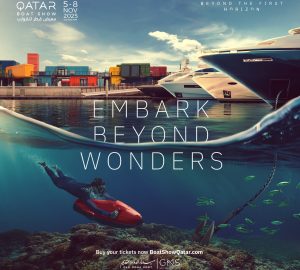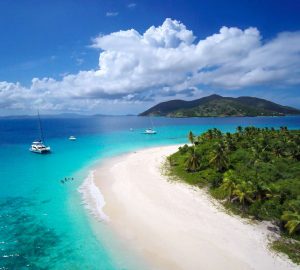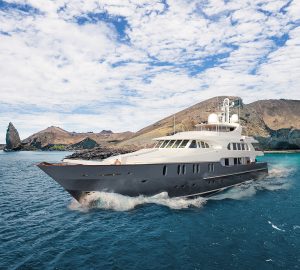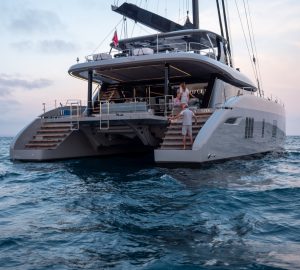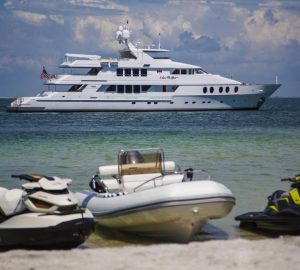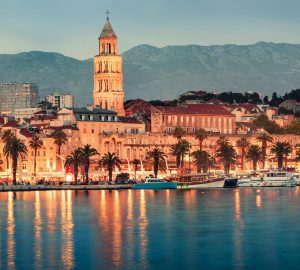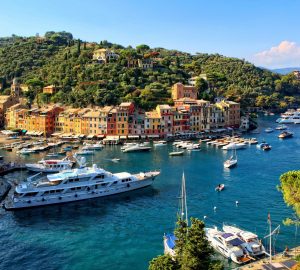The talented Italian designer Bernardo Zuccon reveals his latest concept, motor yacht Discovery. Measuring 54 meters in length, Discovery superyacht is a splendid displacement vessel, boasting living solutions that recognise the owners’ position as the fulcrum of the relationship between indoor and outdoor spaces.
With luxury yacht Discovery Bernardo Zuccon, who grew up in the trade (his father Gianni Zuccon is one of Italy’s most prominent yacht designers), picks up on a number of the concepts illustrated in his previous designs for 40 and 46 metre motor yachts and implements them in the form of new solutions: use of the beam and pillar as the dominant motif in his style, unusual compartmentalisation, modular spaces permitting continuity between indoor and outdoor spaces and a preference for use of natural materials.
Design: unusual solutions for optimal liveability
Superyacht Discovery is a 54 m long, 10.20 m wide luxury vessel with a steel hull and an aluminium superstructure designed to travel long distances at a cruising speed of 12 knots with an autonomy of 4000 miles. With three decks and a huge fly, Discovery strikes the observer with her lines recalling the typical vocabulary of architecture on land and a number of very original living solutions such as the veranda at the bow, the owners’ cabin on the upper deck and the main deck entirely occupied by common areas for guests.
Zuccon designed 54m superyacht Discovery can accommodate up to ten guests in five guest suites. There are four junior suites on the lower deck and an owners’ suite on the upper deck with a cabin running the entire width of the vessel.
The lower deck features not only guest cabins and separate quarters for the crew but a beach club at the stern with a skylight all around the perimeter of the pool on the main deck for receiving natural light from above, so that the space can be used even while the vessel is travelling.
The upper deck is entirely dedicated to guests and their social life. At the stern, there is a beautiful square swimming pool measuring about 2.5 metres on each side with skylights around its perimeter so that it appears to be suspended. The cockpit, about 16 metres long, is a key element on the main deck of the vessel offering guests an opportunity to get together in different ways.
This design demonstrates the architect’s intention of making the most of outdoor spaces without neglecting the comfort that must necessarily be offered on a vessel of this size. The main indoor hall, linked directly with the cockpit, has big side windows all the way up the walls to minimise visual barriers between guests aboard the boat and their natural surroundings at sea. The most interesting feature of the main deck is however the prow, with a dining area continuing almost uninterrupted into a space which is hard to define but is open on the sides and has a central half-roof which suggest it might be considered a winter garden.
The upper deck is designed for use by the owners alone (with the exception of the bow area, where the captain’s cabin is located next to the command bridge). The owners’ cabin has plenty of room thanks to this solution, as it runs the whole width of the vessel, and contains a bathroom with a bathtub and shower, a large wardrobe and a study. The owners’ cabin leads directly to an outdoor area with a lounge and bar exclusively for the owners’ use. One unusual feature of this area is the presence of a “green” filter between the cabin and the outdoor lounge, in the form of two real greenhouses, underlining the importance of introducing natural elements to offer owners potential new ways of enjoying life onboard.
The flying bridge offers a relaxation area with bar cabinets, sofas and a big dining table, more than 20 metres lone, ending at the stern with a big sundeck which can also be used as a helipad, if necessary.
Project summary
In the 54-metre luxury motor yacht Discovery Bernardo Zuccon puts the focus on the strategic relationship people must establish with the spaces they live in with the goal of optimising their comfort and liveability, in a place that must stay true to its marine vocation through use of natural materials and inclusion of greenery onboard.
And, in Bernardo Zuccon’s own words, “The sea will always be one of the things that never change, and the human relationship with it and its specific features will always be the key for all designers. The modus operandi will offer new content in every case, but awareness of the ‘Place’ where the vessel is located can never be neglected. At least not until there are boats that can fly!”

